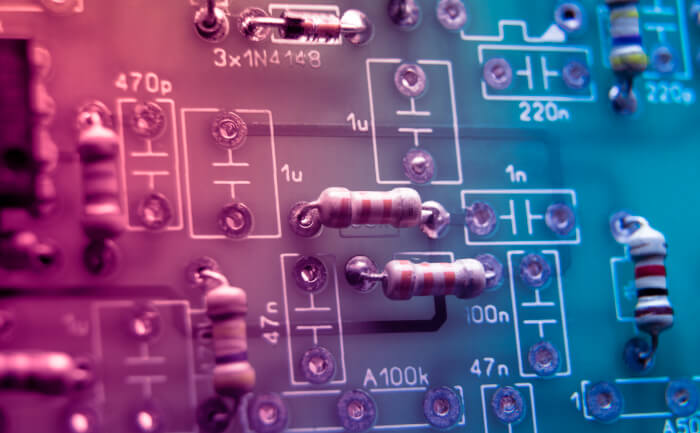CIDER is a mixed-level circuit and device simulator that provides a direct link between technology parameters and circuit performance. A mixed-level circuit and device simulator can provide greater simulation accuracy than a stand-alone circuit or device simulator by numerically modeling the critical devices in a circuit. Compact models can be used for noncritical devices.
CIDER couples the latest version of SPICE3 (version 3F.2) to an internal C-based device simulator, DSIM. SPICE3 provides circuit analyses, compact models for semiconductor devices, and an interactive user interface. DSIM provides accurate, one- and two-dimensional numerical device models based on the solution of Poisson’s equation, and the elec- tron and hole current-continuity equations. DSIM incor- porates many of the same basic physical models found in the the Stanford two-dimensional device simulator PISCES. Input to CIDER consists of a SPICE-like description of the circuit and its compact models, and PISCES-like descriptions of the structures of numerically modeled devices. As a result, CIDER should seem familiar to designers already accustomed to these two tools. For example, SPICE3F.2 input files should run without modification, producing identical results.
CIDER is based on the mixed-level circuit and device simulator CODECS, and is a replacement for this program. The basic algorithms of the two programs are the same. Some of the differences between CIDER and CODECS are described below. The CIDER input format has greater flexibility and allows increased access to physical model parameters. New physical models have been added to allow simulation of state-of-the-art devices. These include transverse field mobility degradation important in scaled-down MOSFETs and a polysilicon model for poly-emitter bipolar transistors. Temperature dependence has been included over the range from -50C to 150C. The numerical models can be used to simulate all the basic types of semiconductor devices: resistors, MOS capacitors, diodes, BJTs, JFETs and MOSFETs. BJTs and JFETs can be modeled with or without a substrate contact. Support has been added for the management of device internal states. Post-processing of device states can be performed using the NUTMEG user interface of SPICE3. Previously computed states can be loaded into the program to provide accurate initial guesses for subsequent analyses. Finally, numerous small bugs have been discovered and fixed, and the program has been ported to a wider variety of computing platforms.
This is free and open source software.
Website: ptolemy.berkeley.edu/projects
Support: GitHub Code Repository
Developer: UC Berkeley
License: Open source
CIDER is written in C. Learn C with our recommended free books and free tutorials.
Return to Backend Circuit Simulators
| Popular series | |
|---|---|
| The largest compilation of the best free and open source software in the universe. Each article is supplied with a legendary ratings chart helping you to make informed decisions. | |
| Hundreds of in-depth reviews offering our unbiased and expert opinion on software. We offer helpful and impartial information. | |
| The Big List of Active Linux Distros is a large compilation of actively developed Linux distributions. | |
| Replace proprietary software with open source alternatives: Google, Microsoft, Apple, Adobe, IBM, Autodesk, Oracle, Atlassian, Corel, Cisco, Intuit, and SAS. | |
| Awesome Free Linux Games Tools showcases a series of tools that making gaming on Linux a more pleasurable experience. This is a new series. | |
| Machine Learning explores practical applications of machine learning and deep learning from a Linux perspective. We've written reviews of more than 40 self-hosted apps. All are free and open source. | |
| New to Linux? Read our Linux for Starters series. We start right at the basics and teach you everything you need to know to get started with Linux. | |
| Alternatives to popular CLI tools showcases essential tools that are modern replacements for core Linux utilities. | |
| Essential Linux system tools focuses on small, indispensable utilities, useful for system administrators as well as regular users. | |
| Linux utilities to maximise your productivity. Small, indispensable tools, useful for anyone running a Linux machine. | |
| Surveys popular streaming services from a Linux perspective: Amazon Music Unlimited, Myuzi, Spotify, Deezer, Tidal. | |
| Saving Money with Linux looks at how you can reduce your energy bills running Linux. | |
| Home computers became commonplace in the 1980s. Emulate home computers including the Commodore 64, Amiga, Atari ST, ZX81, Amstrad CPC, and ZX Spectrum. | |
| Now and Then examines how promising open source software fared over the years. It can be a bumpy ride. | |
| Linux at Home looks at a range of home activities where Linux can play its part, making the most of our time at home, keeping active and engaged. | |
| Linux Candy reveals the lighter side of Linux. Have some fun and escape from the daily drudgery. | |
| Getting Started with Docker helps you master Docker, a set of platform as a service products that delivers software in packages called containers. | |
| Best Free Android Apps. We showcase free Android apps that are definitely worth downloading. There's a strict eligibility criteria for inclusion in this series. | |
| These best free books accelerate your learning of every programming language. Learn a new language today! | |
| These free tutorials offer the perfect tonic to our free programming books series. | |
| Linux Around The World showcases usergroups that are relevant to Linux enthusiasts. Great ways to meet up with fellow enthusiasts. | |
| Stars and Stripes is an occasional series looking at the impact of Linux in the USA. | |
